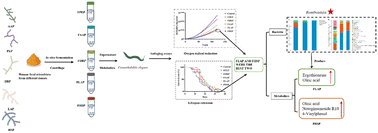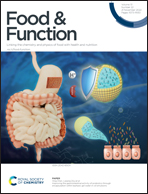Anti-aging potency correlates with metabolites from in vitro fermentation of edible fungal polysaccharides using human fecal intestinal microflora
Abstract
Aging is a natural process in which the structural integrity of an organism declines over time. The in vivo anti-aging activities in Caenorhabditis elegans (C. elegans) of 5 different in vitro edible fungal polysaccharides (EFPs) fermented by human feces were compared. The metabolites and microbial structure within the selected fermented polysaccharide solution were further analyzed using 16S rDNA sequencing and non-targeted metabolomics. The results showed that the fermented EFPs exhibited different anti-aging activities, and fermented Lanmaoa asiatica polysaccharides (FLAP) and Hohenbuehelia serotina polysaccharides (FHSP) were the best two. Beneficial bacteria (Romboutsia and Weissella) and metabolites with antioxidant, anti-inflammatory and immune-protective effects (ergothioneine, oleic acid and notoginsenoside R10) were positively correlated and enriched in FLAP and FHSP. These metabolites might have been generated by those bacteria and could be responsible for a significant anti-aging effect. Therefore, the anti-aging potency of the fermented EFPs correlates with metabolites during fermentation using human fecal intestinal microflora.



 Please wait while we load your content...
Please wait while we load your content...